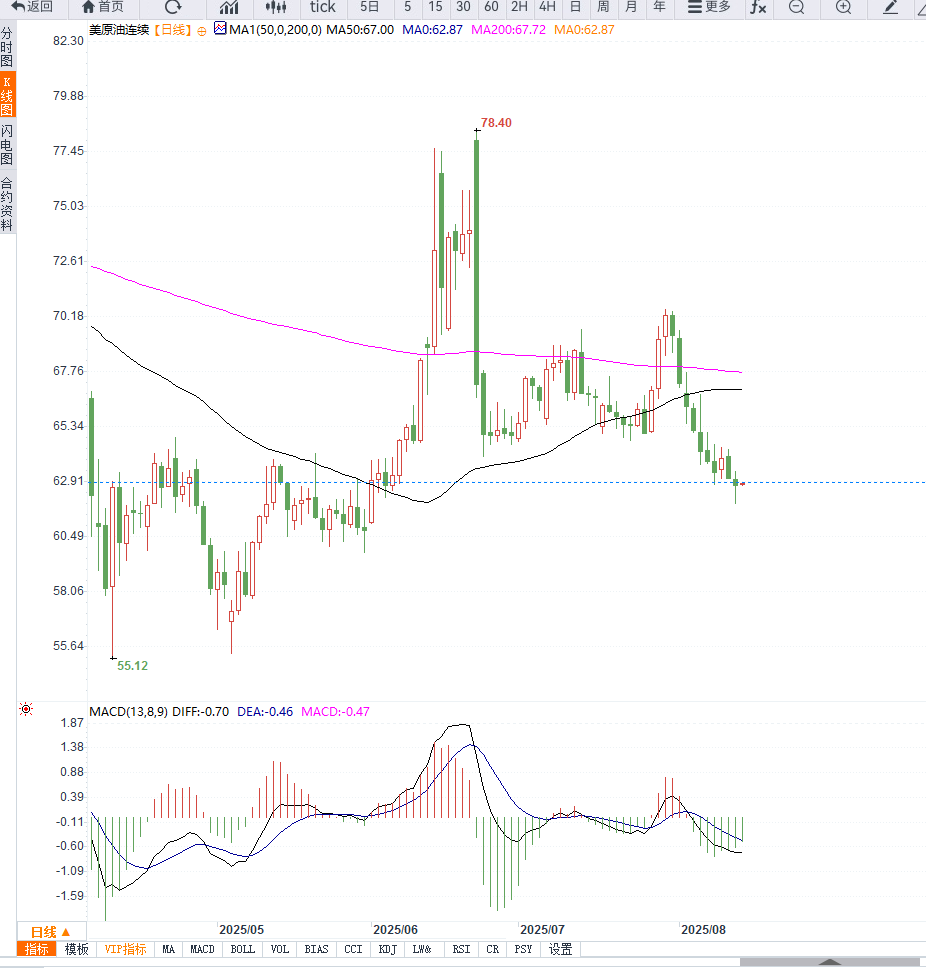Crude oil trading reminder: EIA inventory data unexpectedly increased, and the recovery of market risk appetite still could not prevent the decline in oil prices. Be careful of an acceleration of downward movement in the short term
2025-08-14 09:56:40
Earlier, both major crude oil benchmarks hit two-month lows on Wednesday, influenced by bearish supply guidance issued by the US government and the International Energy Agency (IEA).

The upcoming meeting between US President Trump and Russian President Vladimir Putin has injected a risk premium into the market. Before the meeting, Trump said that if Putin does not reach a peaceful consensus on the Ukraine issue, there will be "serious consequences" and hinted at possible economic sanctions.
Rystad Energy said in a report that uncertainty surrounding the U.S.-Russia negotiations has increased the bullish risk premium in the oil market as buyers of Russian crude oil may face greater economic pressure.
Another supporting factor comes from high expectations of a September rate cut by the Federal Reserve. A modest rise in U.S. inflation in July, coupled with weak employment data, has led markets to bet on a near 100% probability of a rate cut at the Fed's September 16-17 meeting, with the possibility of a half-percentage point cut also increasing.
The dollar held near multi-week lows against the euro and sterling on Thursday, providing price support for dollar-denominated crude oil.
However, the upward space for oil prices is limited. Data from the U.S. Energy Information Administration (EIA) showed that U.S. crude oil inventories unexpectedly increased by 3 million barrels in the week ending August 8, while the market had previously expected a decrease of 275,000 barrels.
In addition, the IEA's latest forecast shows that global oil supply growth in 2025 and 2026 will exceed expectations, mainly due to increased production by OPEC+ and increased production in non-OPEC countries.
Institutional views suggest that future oil price trends will depend more on the evolution of the situation between Ukraine and Russia and the pace of global supply growth. If the negotiations fail to produce substantial results or supply continues to rise, oil prices may come under pressure again.
Judging from the daily trend, WTI crude oil prices received initial support near $62.50 after a continuous decline. It has rebounded to around $63 in the short term, but there is strong resistance in the upper $64.20-64.50 range, which is also close to the 20-day moving average.
If the price breaks through this resistance, it could potentially test $65.50. Conversely, if it falls below $62.50, it could fall further to $61.80 or even $60.50. The MACD indicator remains below the zero axis, but the red bars are beginning to shorten, indicating a weakening of bearish momentum.

Editor's Note: The oil market is currently locked in a tug-of-war between bulls and bears. On the one hand, geopolitical factors and expectations of loose monetary policy are driving up risk premiums, while on the other, rising inventories and supply expansion are constraining prices. In the short term, market volatility is likely to be primarily influenced by the outcome of the US-Russia meeting and the Federal Reserve's September policy path.
- Risk Warning and Disclaimer
- The market involves risk, and trading may not be suitable for all investors. This article is for reference only and does not constitute personal investment advice, nor does it take into account certain users’ specific investment objectives, financial situation, or other needs. Any investment decisions made based on this information are at your own risk.





















